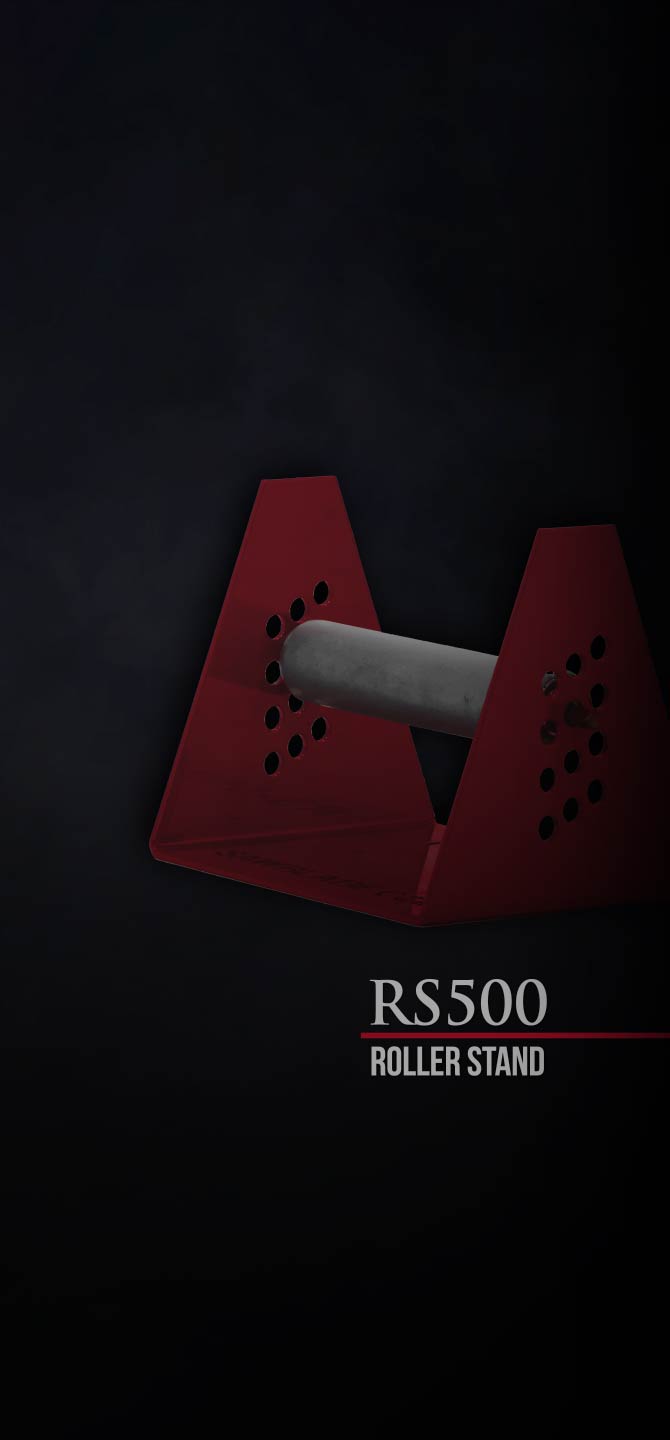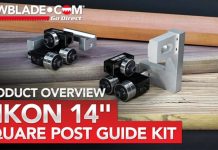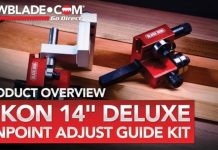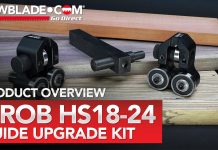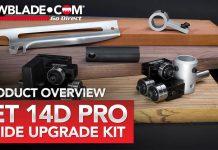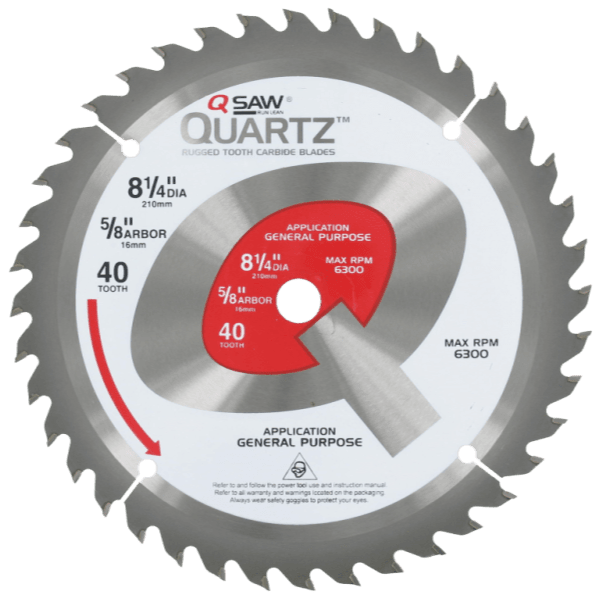Carter Bearing Guide Adjustment Instructions
Whether you have bearing guides or block guides, this video will show you how to properly adjust them.
Table of Contents
What’s included
Your Band Saw Guide Upgrade Kit comes with a lower guide, upper guide and a new guard attachment. The kit also includes a set of screws which are Allen head, making it a lot easier to install the lower unit, and of course instructions for installation.
If you upgrade your saw with a riser block, make sure to get the guard attachment with the slot so that you can add your new extended guard.
Removing the Blade
Let’s walk through the steps of installing and/or adjusting your new bearing or block guides.
First, we will ensure the work area is clean and that our saw is unplugged.
Next, let’s remove our table by removing the knobs underneath, this will allow us to access the bottom guides. You can also remove the blade first, up to you.
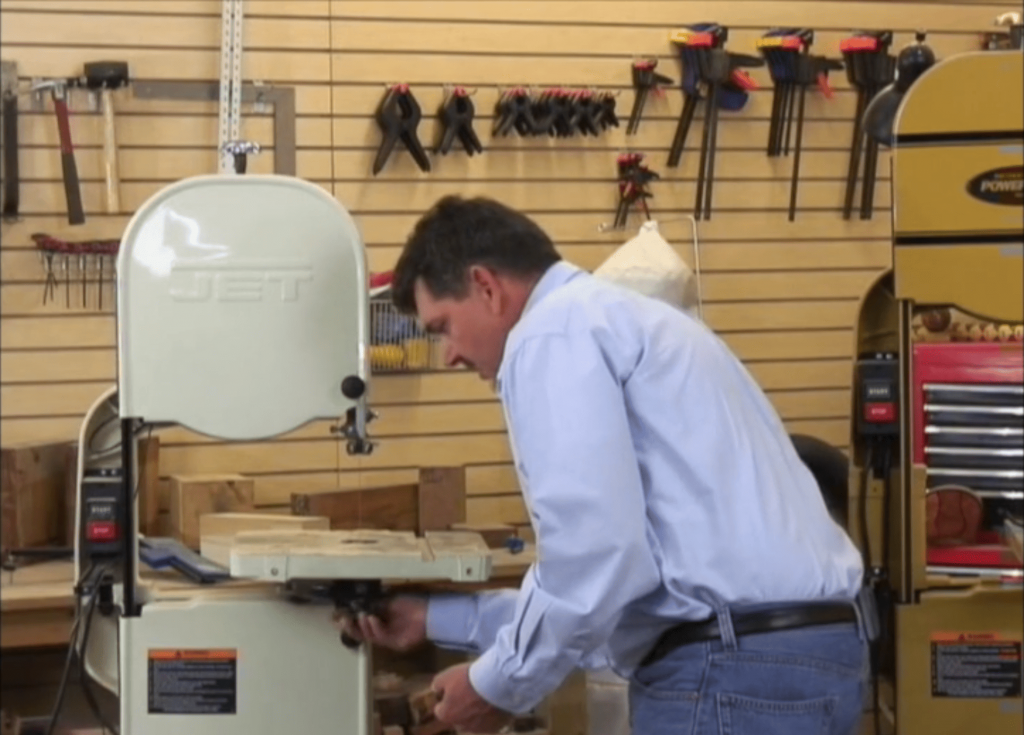
Now you can remove the blade by loosening its tension rod on top just enough to see some slack between the wheel and the blade. This makes reinstallation of the blade much easier. Pull it off the band wheels and slide the blade out.
This is a good time to inspect the tires, making sure they’re still properly stuck to the wheel (only if using black rubber since other material such as urethane won’t need to be glued down).

Turn the wheels and make sure there is no side to side movement of the top wheel, the bottom one should not have any movement (either side to side or top to bottom). Watch out for a concave tire and replace it if need be.
One your wheels and tire are checked, we can start loosening our guides.
Loosening the guides
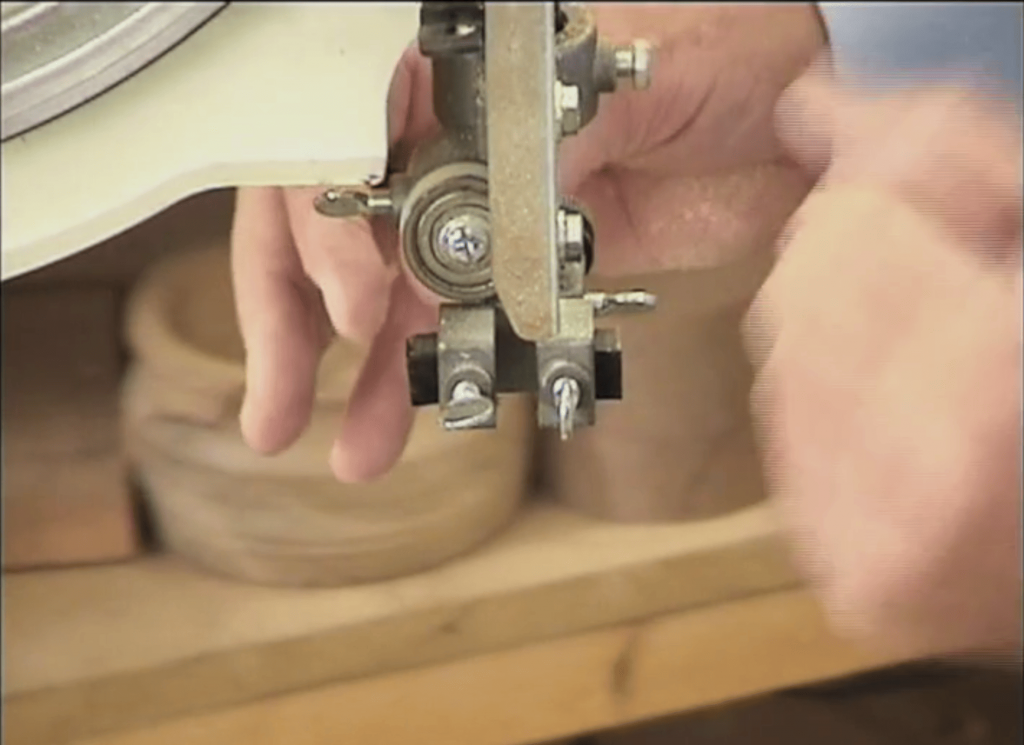
Loosen the guides and get them out of the way, the thrust bearing should be backed out of the way as well
The top guides will require to loosen just one bolt and they will slide right off. Next, we can open up the lower guides. Make sure to keep your lower factory blade guard to reinstall later.
The bottom guides are attached by two bolts and can be accessed by sliding the guides forwards and then backwards.
Feel free to remove the trunnion if it helps adjust the lower guides.
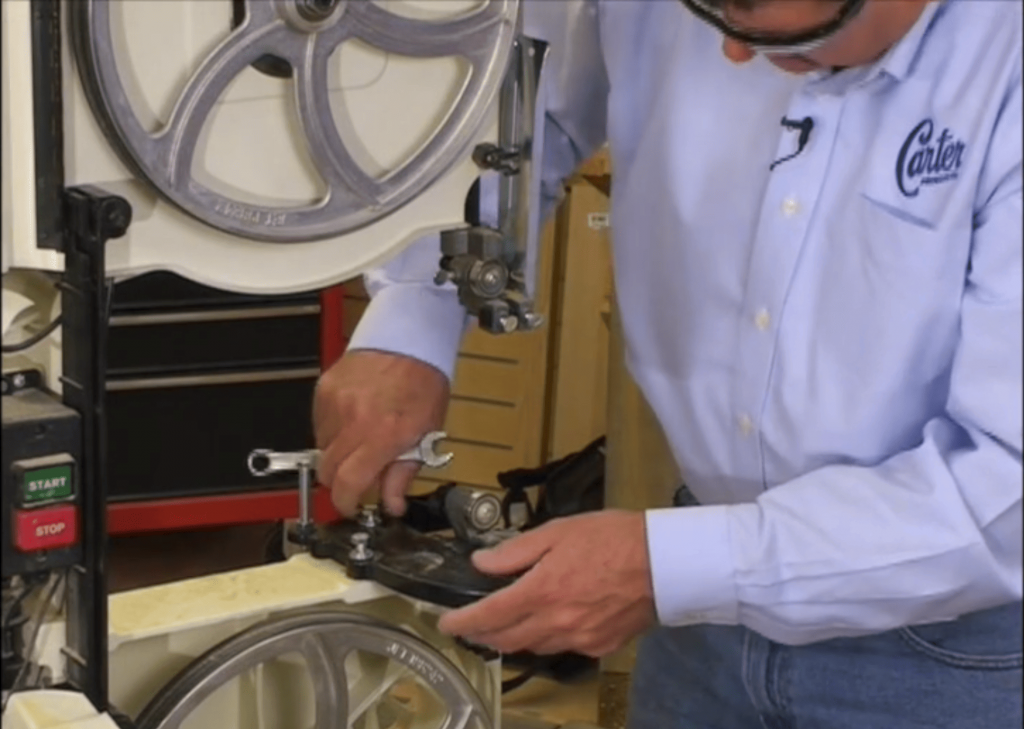
Installing the blade
Now you can grab your blade, catching the bottom wheel first and rolling it up to the top wheel. Make sure that the deepest part of the tooth is centered on the wheel and that the tension is correct. You can tap on the side of the blade, it shouldn’t move more than 1/8th” either way with no guides set.
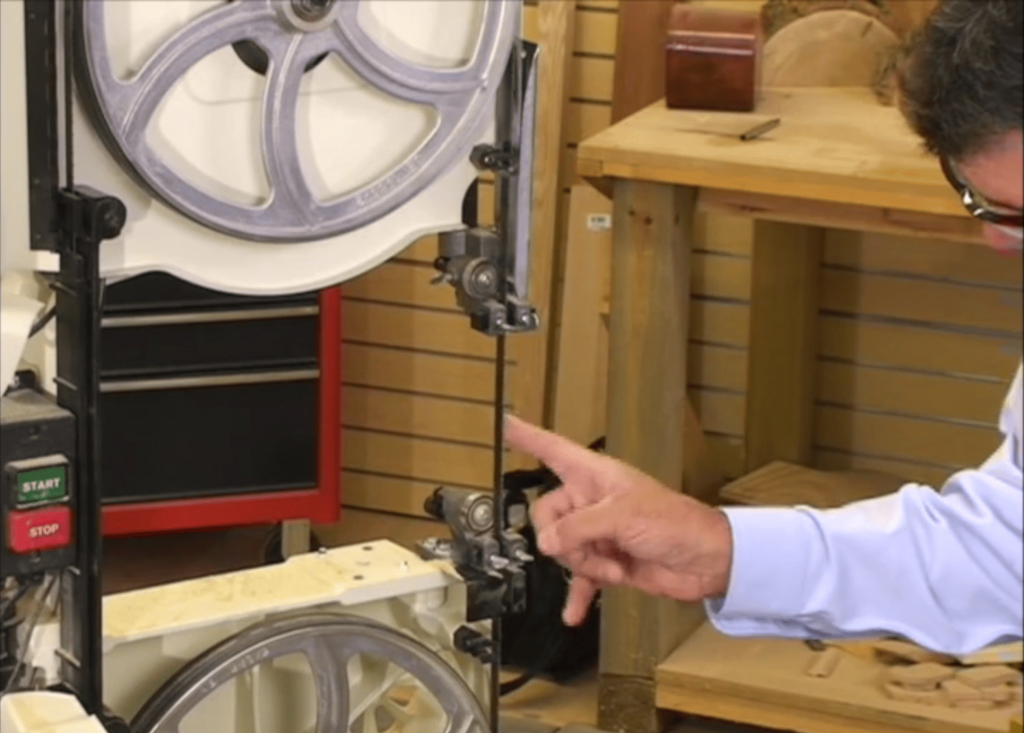
Adjusting the back bearings
Now you can start by adjusting the thrust bearing until it touches the blade. Then back it off just enough so the blade doesn’t touch it. This will give you the rigidity you need when you start cutting and applying pressure against the blade.
Do the same thing with the lower guide, this is where removing the table helps so you can see the position of the guides easily. Rotate the wheel and you should see neither of the back bearings turning.
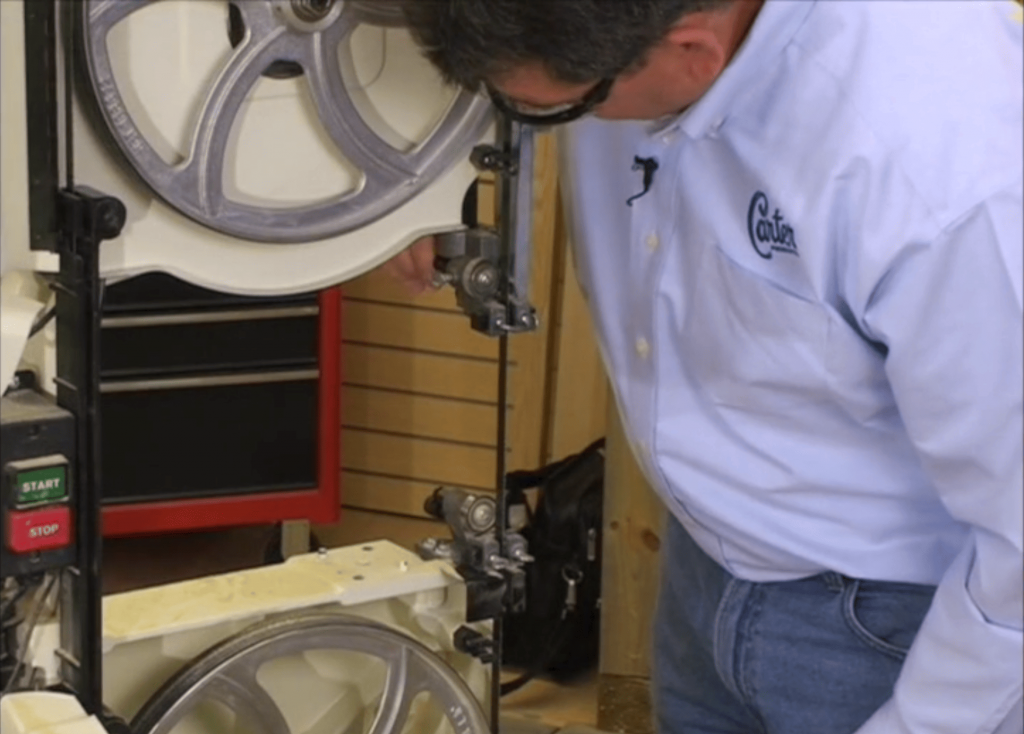
The blocks
Start pushing the blocks in while rotating the wheel. The slightest variations of the blade will move the blocks in and out. Avoid the blocks touching the blade as it will create friction, heat and destroy the blade.
Same process with the lower blocks, making sure that the front edge of the block is 1/16″ to 1/32″ behind the gullet of the blade. If it’s too tight you migh hear it in the blade.
The rule of thumb is to get the guides as close as possible without touching the blade.
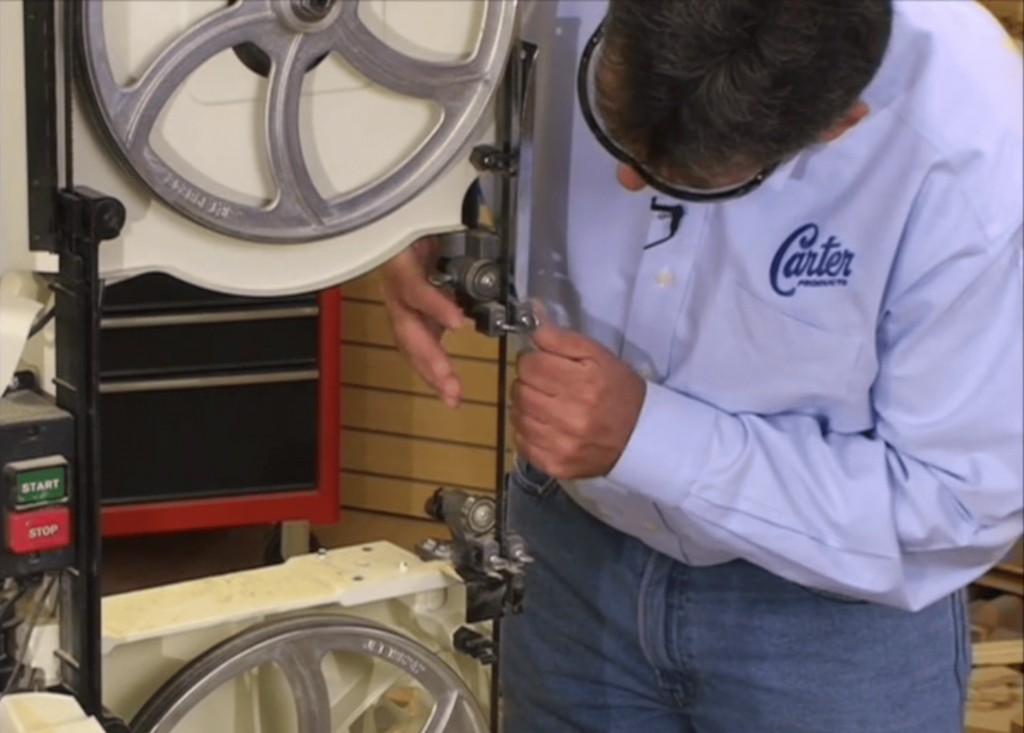
Final Steps
Take the blade off, without over-loosing it. Put the trunnion back. Drop the table back into place and put the blade back on putting the bottom wheel first and rolling the blade into place. Check that you have the proper tension. Drop the insert back into place. Close the cover and plug the saw back.
Time to test your band saw!
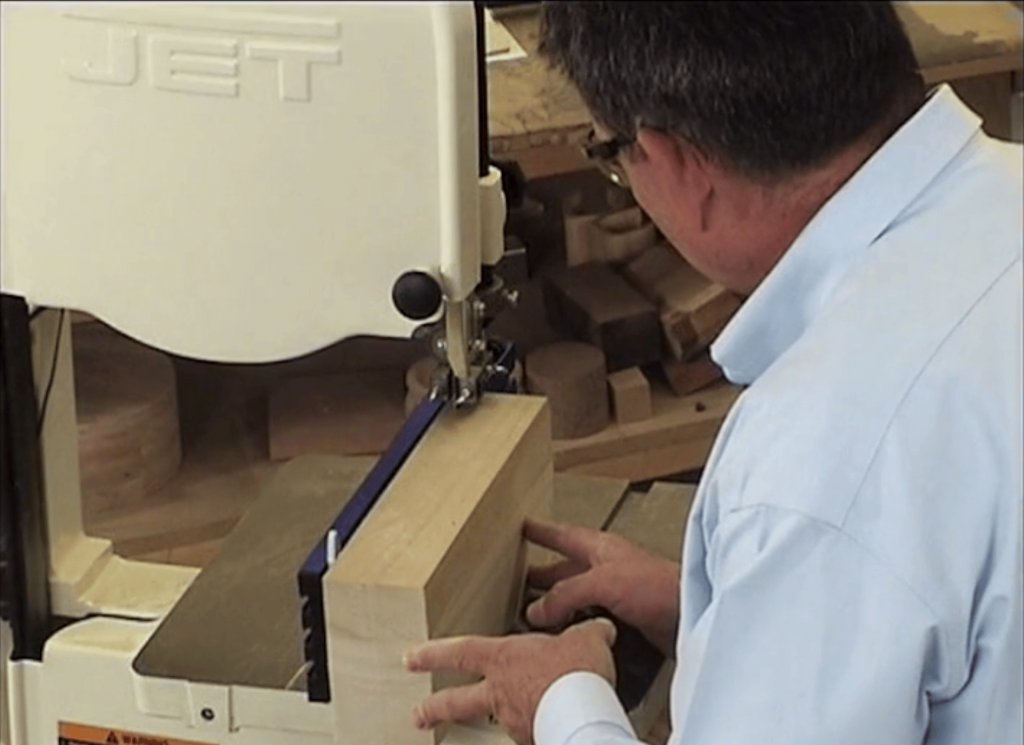
Here at Sawblade.com we sell all types of bearing guides for all your sawing needs, check out our bearing guides for wood and our Carbide Band Saw Guides for Industrial Saws.
